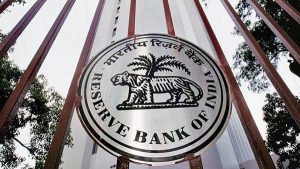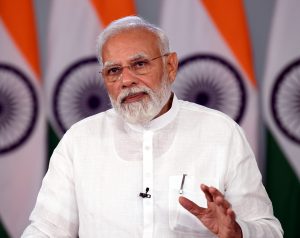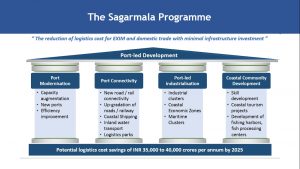Today Current Affairs: 6th May 2022 for UPSC IAS exams, State PSC exams, SSC CGL, State SSC, RRB, Railways, Banking Exam & IBPS, etc
Table of Contents
Repo Rate Increased:

The Reserve Bank of India (RBI) raised the repo rate by 40 basis points (bps) to 4.4% citing inflation that was globally “rising alarmingly and spreading fast”.
- Monetary Policy Committee (MPC) had in an off-cycle meeting reviewed the latest economic developments including the impact of the war in Ukraine and decided to increase the policy interest rates in a bid to curb accelerating inflation.
- The MPC, however, retained its ‘accommodative’ policy stance even as it focuses on withdrawal of accommodation to keep inflation within the target range while supporting growth.
- As part of the withdrawal of accommodation, the RBI also raised the Cash Reserve Ratio (CRR) by 50 basis points to 4.5% with effect from May 21 so as to drain surplus liquidity of about ₹87,000 crore.
- As part of the increases, the standing deposit facility (SDF) rate would become 4.15% and the marginal standing facility (MSF) and bank rate would be 4.65%.
- These decisions are in consonance with the objective of achieving the medium-term target for consumer price index (CPI) inflation of 4% within a band of +/- 2%.
Unique Disability ID Scheme:

The Ministry of Social Justice and Empowerment has asked states to speed up implementation of the Unique Disability ID (UDID) scheme for Persons With Disabilities (PwD) in the 75 districts.
- The Rural Development Ministry has selected the UDID programme as a part of its 90-day campaign in districts “selected on the basis of unsung heroes of India’s freedom struggle” under Azadi ka Amrit Mahotsav.
- The campaign aimed for 100% coverage of 17 Central schemes in the 75 districts.
- The Unique ID for Persons with Disabilities project is being implemented with a view of creating a National Database for PwDs, and to issue a Unique Disability Identity Card to each person with disabilities.
- The objective is to enable the PwDs to obtain the new UDID card / Disability Certificate to avail schemes and benefits provided by the Government through its various Ministries and their Departments.
Prime Minister’s Visit To Denmark:

During the Indian Prime Minister’s Visit to Denmark, India and Denmark agreed to further strengthen the Green Strategic Partnership with a focus on green hydrogen, renewable energy and wastewater management.
- Further, India conveyed its acceptance of the Danish invitation to join the International Center for Antimicrobial Resistance Solutions (ICARS) as a Mission Partner.
- The Danish Prime Minister confirmed Danish accession to the Global Digital Health Partnership on India’s invitation to improve public health and well-being through evidence-based digital technologies.
- The diplomatic relations between India and Denmark, established in September 1949, are marked by regular high-level exchanges.
- Both countries share historical links, common democratic traditions and a shared desire for regional, as well as international peace and stability.
- Bilateral relations were elevated to the level of “Green Strategic Partnership” during the Virtual Summit held in 2020.
- Bilateral trade in goods and services between India and Denmark has grown by 78%, from USD 2.8 billion in 2016 to USD 5 billion in 2021.
- The major export items from India to Denmark are textiles, apparels and yarns related, vehicles and components, metal goods, iron and steel, footwear, and travel goods.
- Major Danish exports to India are medicinal/pharmaceutical goods, power generating machinery, industrial machinery, metal waste and ore, and organic chemicals.
- Cultural Exchange: India’s 75th Independence Day was celebrated in Copenhagen with a great enthusiasm with a flag hoisting ceremony and vibrant Azadi Ka Amrit Mahotsav celebrations, attended by a large number of the diaspora.
- Indian community in Denmark include IT professionals, doctors and engineers.
- Important streets and public places have been named after Indian leaders which include the Gandhi Plaene (Gandhi Park), Copenhagen and a Nehru Road near Aarhu University in Aarhus.
State Of The World’s Forests 2022:

The State of the World’s Forests 2022 (SOFO 2022) was released by the United Nations Food and Agriculture Organization (FAO).
- In January 2022 the Union Ministry of Environment, Forests and Climate Change (MoEFCC) released the India State of Forest Report-2021.
- At the Glasgow Leaders’ Declaration on Forests and Land Use, 140 countries pledged to eliminate forest loss by 2030 and to support restoration and sustainable production and consumption.
Highlights of the Report:
- The 420 million hectares (mha) of forests have been lost between 1990 and 2020, due to deforestation, though forests cover 4.06 billion ha of the earth’s geographical area.
- Although the rate of deforestation was declining, 10 mha of forests were lost every year between 2015 and 2020.
- An estimated 289 mha of forests would be deforested between 2016 and 2050 in the tropics alone, resulting in the emission of 169 GtCO2e if additional action is not taken.
- The greenhouse gas total is expressed in terms of billions of tonnes of global annual CO2 equivalent emissions (GtCO2e/year).
- 15% of 250 emerging infectious diseases have been linked to forests.
- Example: Covid-19, Drug-resistant infections (Antimicrobials), Zika Virus, etc.
- 30% of new diseases, reported since 1960, can be attributed to deforestation and land-use-change.
- The cost of global strategies to prevent pandemics based on reducing the illegal wildlife trade, avoiding land-use change and increasing surveillance was estimated to be USD22 billion to USD31 billion.
- Approximately 124 million more people fell into extreme poverty after Covid-19 and this may have longer-term impacts on wood-based fuel (such as firewood, charcoal) due to increase in wood-based fuel use in some countries during the pandemic.
- The world population is projected to reach 9.7 billion people by 2050, which will increase competition for land, as the demand for food for this large population will rise by 35 to 56% by the 2050s.
- The annual global consumption of all natural resources combined is expected to more than double from 92 billion tonnes in 2017 to 190 billion tonnes in 2060 due to increases in population size and affluence.
- Annual biomass extraction is expected to reach 44 billion tonnes by 2060, from 24 billion tonnes in 2017.
- Demand for forest-based biomass is expected to rise further, mainly due to construction and packaging.
- It is estimated that more than half of world Gross Domestic Product (GDP) (USD 84.4 trillion in 2020) depends moderately (USD 31 trillion per year) or highly (USD 13 trillion per year) on ecosystem services, including those provided by forests.
- Ecosystem services make human life possible by, for example, providing nutritious food and clean water, regulating disease and climate, supporting the pollination of crops and soil formation, and providing recreational, cultural and spiritual benefits
State of the World’s Forests:
- The report is published bi-annually and is widely regarded as one of the most important stock takes on forest ecosystems.
- The 2022 edition of SOFO explores the potential of three forest pathways for achieving green recovery and tackling multidimensional planetary crises, including climate change and biodiversity loss.
ISRO Mission To Venus:

After sending missions to the Moon and Mars, the ISRO is now readying a spacecraft to orbit Venus to study what lies below the surface of the solar system’s hottest planet, and also unravel the mysteries under the Sulfuric Acid clouds enveloping it.
- ISRO is planning to launch the mission in December 2024.
- Venus is the second planet from the sun and the hottest planet in the solar system with a surface temperature of 500C – high enough to melt lead.
- The planet’s thick atmosphere has cranked the surface pressure up to 90 bars.
- A single Venusian rotation takes 243.0226 Earth days.
- That means a day lasts longer than a year on Venus, which makes a complete orbit around the sun in 225 Earth days.
- The Venusian planetary core has a diameter of about 4,360 miles (7,000 km), comparable to Earth’s core.
- Venus is one of just two planets that rotate from east to west. Only Venus and Uranus have this “backwards” rotation.
- Missions to Venus:
- Magellan – a Nasa mission that ended in 1994.
- Venus Express– A European mission- focused on atmospheric science.
- Akatsuki– Japanese spacecraft- focused on atmospheric science.
- NASA’s new missions to Venus:
- Davinci+:
- The Davinci+ (Deep Atmosphere Venus Investigation of Noble gases, Chemistry, and Imaging) mission will:
- Measure the planet’s atmosphere to gain insight into how it formed and evolved.
- Determine whether Venus ever had an ocean.
- Return the first high resolution images of the planet’s “tesserae” geological features (These features could be comparable to continents on Earth).
- Veritas (Venus Emissivity, Radio Science, InSAR, Topography, and Spectroscopy):
- This mission will map the planet’s surface to understand its geological history and investigate how it developed so differently than Earth.
- It will use a form of radar to chart surface elevations and discover whether volcanoes and earthquakes are still happening.
- Davinci+:
What Is Sealed Cover Jurisprudence?

The Supreme Court, in the Media One ban case, has reiterated its intention to examine the legality of governments filing incriminating material in sealed covers without sharing the information with the accused/other party.
- The issue of “sealed cover jurisprudence” came up in the previous hearing on March 15, when the Centre wanted to pass on to the court its internal files regarding the ban in a sealed cover.
Sealed Cover Jurisprudence?
- It is a practice used by the Supreme Court and sometimes lower courts, of asking for or accepting information from government agencies in sealed envelopes that can only be accessed by judges.
- While a specific law does not define the doctrine of sealed cover, the Supreme Court derives its power to use it from Rule 7 of order XIII of the Supreme Court Rules and Section 123 of the Indian Evidence Act of 1872.
- Rule 7 of order XIII of the Supreme Court Rules: It is stated under the said rule that if the Chief Justice or court directs certain information to be kept under sealed cover or considers it of confidential nature, no party would be allowed access to the contents of such information.
- Exceptions:
- If the Chief Justice himself orders that the opposite party be allowed to access it.
- It also mentions that information can be kept confidential if its publication is not considered to be in the interest of the public.
Fourth Edition Of The International Conference On Disaster Resilient Infrastructure:

The Prime Minister Narendra Modi addressed the inaugural session of the fourth edition of the International Conference on Disaster Resilient Infrastructure.
Highlights:
- He noted that the coalition has expanded and made valuable contributions.
- He mentioned the initiative on ‘Infrastructure for Resilient Island States’ that was launched at COP-26 and CDRI’s work on Resilient Airports studying 150 airports around the world.
- The ‘Global Assessment of Disaster Resilience of Infrastructure Systems’ that is being led by CDRI will help create global knowledge that would be immensely valuable.
- The Prime Minister said that in order to make our future resilient we have to work towards a ‘Resilient Infrastructure Transition’.
- Resilient infrastructure can also be the centrepiece of our wider adaptation efforts.
International Conference on Disaster Resilient Infrastructure (ICDRI)
- The International Conference on Disaster Resilient Infrastructure (ICDRI) is the annual conference of the Coalition for Disaster Resilient Infrastructure (CDRI).
- It brings together member countries, organizations and institutions to strengthen the global discourse on disaster and climate resilient infrastructure.
- In 2018 and 2019, the first and second International Workshop on Disaster Resilient Infrastructure took place in New Delhi, India. ICDRI 2021 was hosted virtually.
- The fourth edition of ICDRI is being organized in partnership with the United States Government, from 4 to 6 May 2022 in New Delhi, in hybrid format.
- CDRI was launched by the Prime Minister of India, Narendra Modi, at the 2019 UN Climate Summit.
Meeting Of The National Sagarmala Apex Committee:

Union Minister for Ports, Shipping and Waterways will chair the meeting of the National Sagarmala Apex Committee (NSAC) on 6th May, 2022 at Vigyan Bhawan, in New Delhi.
- The National Sagarmala Apex Committee (NSAC) is the apex body providing policy directions and guidance for port led development-Sagarmala projects and reviews its implementation.
- The NSAC was constituted on 13.05.2015 by the Union Cabinet and is chaired by Minister for Ports, Shipping & Waterways with Cabinet Ministers from stakeholder central Ministries and Chief Ministers & Administrators of Maritime States and Union territories respectively as members.
- The committee shall review the Sagarmala program.
- Holistic development of coastal communities through a new initiative ‘Sagartat Samriddhi Yojana’ will also be taken up for discussion in the meeting.
Sagarmala Program:
- Sagarmala is a National Programme to accelerate economic development in the country by harnessing the potential of India’s 7,500 km long coastline and 14,500 km of potentially navigable waterways.
- It was announced by the Prime Minister in 2014 and approved by the Union Cabinet on 25th March 2015.
- It holds a vision to reduce logistics cost for both domestic and EXIM cargo with optimal infrastructure investment.
- The projects under the scheme have been categorized into five pillars:
- Port modernization & new port development,
- Port connectivity enhancement,
- Port-led industrialization,
- Coastal community development and
- Coastal shipping and Inland water transport
2nd India-Nordic Summit:

Prime Minister Narendra Modi participated in the 2nd India-Nordic Summit along with Prime Ministers of Denmark, Iceland, Norway, Sweden and Finland.
- The Summit provided an opportunity to review the progress of the India-Nordic relations since the 1st India-Nordic Summit, which was held in 2018 in Stockholm.
- Prime Minister Modi invited Nordic companies for investing in the Blue Economy sector, especially in India’s Sagarmala project.
- India’s partnership with the Nordic region in the Arctic Region was discussed. Prime Minister noted that India’s Arctic Policy provides a good framework for expansion of India-Nordic cooperation in the Arctic region.
- Prime Minister invited the sovereign wealth funds of the Nordic countries to invest in India.
- The Nordic Countries reiterated their support for India’s Permanent Membership of a reformed and expanded Security Council.
- India and the Nordic countries were committed to follow up on the historic decision at UNEA 5.2 for negotiating an international legally binding instrument to end plastic pollution with an ambition to completing the work by 2024.
Sex Ratio At Birth In India:

Ladakh recorded the highest sex ratio at birth in the country in 2020, followed by Arunachal Pradesh, Andaman and Nicobar Islands, Tripura and Kerala, according to the annual report on Vital Statistics based on 2020 Civil Registration System report.
- Highest Sex Ratio at Birth (SRB) based on registered events has been reported by Ladakh (1,104) followed by Arunachal Pradesh (1,011), A&N Islands (984), Tripura (974), and Kerala (969), the report released by the Registrar-General of India said.
- The lowest sex ratio was reported by Manipur (880), followed by Dadra and Nagar Haveli and Daman and Diu (898), Gujarat (909), Haryana (916) and Madhya Pradesh (921).
- In 2019, the highest sex ratio at birth was reported by Arunachal Pradesh (1,024), followed by Nagaland (1,001), Mizoram (975) and A&N Islands (965), and the lowest sex ratio was reported by Gujarat (901), Assam (903), Madhya Pradesh (905) and Jammu & Kashmir (909).
- None of the States or UTs have recorded sex ratio at birth below 880.
- The report said that the requisite information from Maharashtra, Sikkim, Uttar Pradesh and Delhi on sex ratio was “not available.” They had not provided the said data in 2019 as well.
- Sex ratio at birth is the number of females per thousand males.
- The sex ratio at birth of registered events is an important indicator to map the sex differential of the population at the beginning of their life.
- The sex ratio at birth has been calculated after deducting the delayed registration of more than one year for the year 2020.




